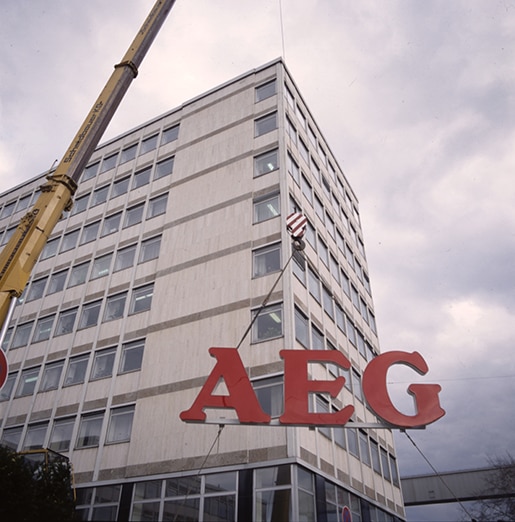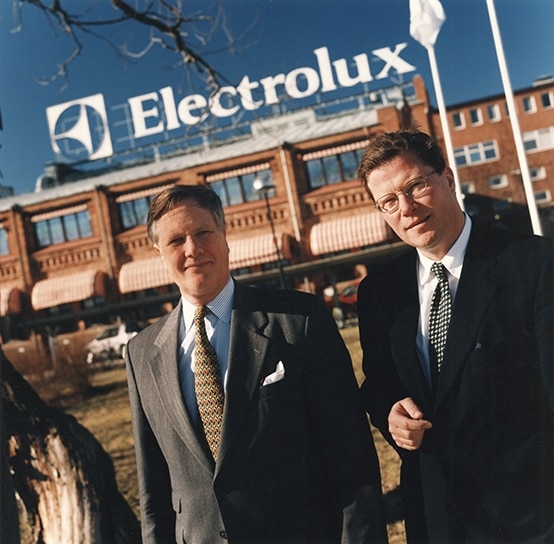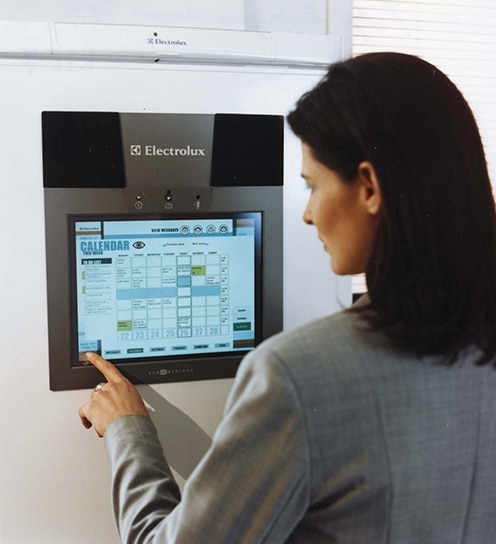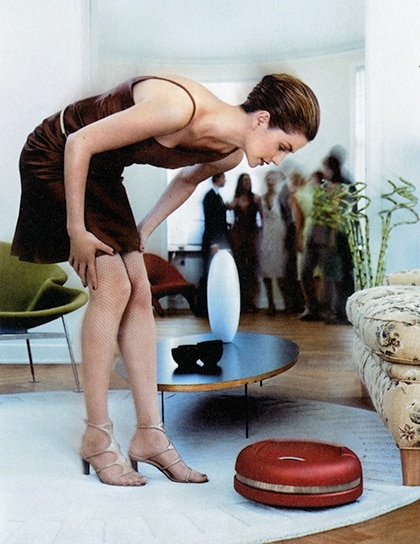In the beginning of the 1990s, a deep financial crisis in Sweden triggered restructuring activities and divestment of parts of Electrolux. It was also time to get more synergies out of the acquisitions and to build a more streamlined Group.
After the acquisition of Zanussi in 1984, President Anders Scharp initiated a huge integration effort led by the head of white goods Leif Johansson. The European white good business became better coordinated with the creation of three cross-border product lines, Cold, Hot and Wet, according to which all factories reported. This meant the start of a more coordinated manufacturing footprint and product development.

Mounting of the AEG-sign
German premium brand AEG was acquired in 1994. Both AEG and Electrolux, now under Leif Johansson as CEO, had started to work on more environmentally-friendly products in the beginning of the 1990s. In 1993, Electrolux launched the first CFC-free generation fridges and freezers and the year after the Group included a chapter on sustainability in its annual report for the first time.
In 1996, Electrolux acquired Brazil’s second largest white goods manufacturer Refripar, which would become the foundation for a long period of strong growth in Brazil and South America. In parallel, the Group made efforts to grow in China and India. Production and joint ventures started, but with increasingly intense competition from both local and global players, the effort proved harder than anticipated. In the South East Asian markets however, Electrolux quickly became trusted for its distinctive front-loaded washing machines which resulted in a strong brand presence in countries like Thailand, Vietnam and Malaysia. In 2000, Electrolux acquired Australia’s leading appliance manufacturer, Email, which complemented the already strong position in vacuum cleaners.

Leif Johansson and Michael Treschow
When Michael Treschow succeeded Leif Johansson as CEO in 1997, plans to restructure the Group even further were in the works. Treschow decided to implement the plans in one coordinated program with closure of 25 factories and 50 warehouses over a two year period, plus focus the Group on the core business by divesting 14 business units like sewing machines, kitchen and bathroom equipment, professional refrigeration and the direct sales operation.

Demonstrating the touch screen on the first generation of Electrolux Screenfridge
In 2000, the Group repurchased the rights to the Electrolux brand in North America, which had been sold in 1968. In parallel, work was underway on a clearer brand strategy, with the goal to limit the number of brands and focus on fewer and stronger brands, with Electrolux as the main brand. Efforts also started to gain deeper consumer insight, in order to focus more of the product development on better taste, care and wellbeing experiences.


